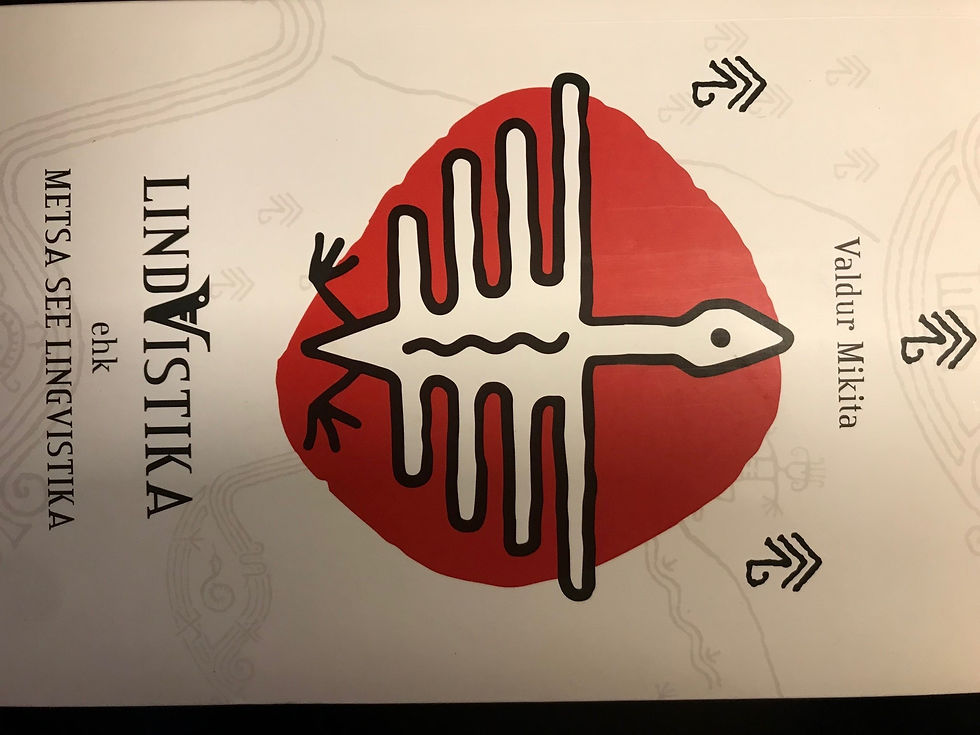Where stones are still alive
- bernienapp
- Oct 20, 2024
- 3 min read
Of old, trees and stones shared the same reality as animals – humans could treat with all, as living beings imbued with a soul. In other words, to the ancients, there was no difference between the sacred and the ordinary; humans lived connected with all of reality, or their view of it. This animist view has stayed with Estonians, unconsciously or otherwise, to the present day - an extraordinary idea advanced by Valdur Mikita.
In Forestonia (2020), he writes: “An Estonian is able to calculate some kind of subjective magical value for every natural object. I wouldn’t begin to mention it if I didn’t have credible proof this way of thinking is astoundingly widespread among Estonians.”
For Mikita, some mushrooms aid the thought process, and he is not thinking of the psychotropic type. Russullas and boletes stimulate “peripheral consciousness” while chanterelles and milkcaps are no help at all.
“Wild strawberries and blueberry bushes are neutral, but lingonberries and blackberries hold strong magical importance.” Chaffinches and storks are ordinary birds while cranes, golden orioles and nightingales “tap directly into one’s central nervous system”.
To understand Mikita, one needs a definition. In The History of Magic (2020), Chris Gosden says magic “emphasises human connections with the universe, so that people are open to the workings of the universe, and the universe is responsive to us”.
And, “a modern magic can help us to explore our physical and ethical connections to the world in a time of profound ecological crisis”.
Magic for Gosden is complementary to science; one discipline asks can we do this, the other asks a moral question, should we do it?
To return to Mikita and his view of Estonians: this is about culture, and a shared attitude towards nature and Estonians’ place in it. It helps that Estonia is sparsely populated – it is possible to retreat to the summer cabin out of everyone’s way, and if you have the mentality to enjoy it, even better.
Mikita makes a further point, that this Estonian animist world view is truly ancient, going back to a time when Finnic peoples moved into the Baltic, and, perhaps, even beforehand, when our forebears still lived in Siberia thousands of years ago.
He concludes in The Linguistic Forest (2013), “To put it simply, the peculiarity of Estonia lies in the proximity of culture and nature, in the cohesion of language and nature.”
A reviewer says this book is written “in a lush and absent-minded way, so that repetitive patterns, crazy chains of connections, rarely striking phrases, and poetic metaphors arise” (Wikipedia). This explains some trouble to read Mikita in Estonian. Nevertheless, I will have a go.
In Forest This Linguistics (2015), Mikita makes a point that Estonians’ clinging on to their ancient language - despite centuries of invasions, wars and conquests by others - while still living in close physical and cultural connection with nature, has allowed Estonians to retain a mentality, a nature-based spiritualism or ethic, that according to Mikita has largely disappeared from the rest of the western world.
It's a bold claim, if one takes a cue on animism from Karen Armstrong in A Short History of Myth (2005): “When these early people looked at a stone, they did not see an inert, unpromising rock. Its very otherness made it holy. A stone was a common revelation of the sacred in the ancient world. Again, a tree, which had the power effortlessly to renew itself, incarnated and made visible a miraculous vitality denied to mortal men and women.”
To give Valdur Mikita the last word, he describes the Estonians’ sense of home – “This is a place where happiness takes leaf, where a loose dialogue unfolds with the sky, earth, birds and other animals, as if living inside an ancient myth.”








Comments